- Did you know Charlotte is home to more than 230 unique attractions, yet most visitors never see the city beyond its famous Uptown skyline? Get ready to uncover the best-kept secrets and hidden gems the Queen City has to offer.
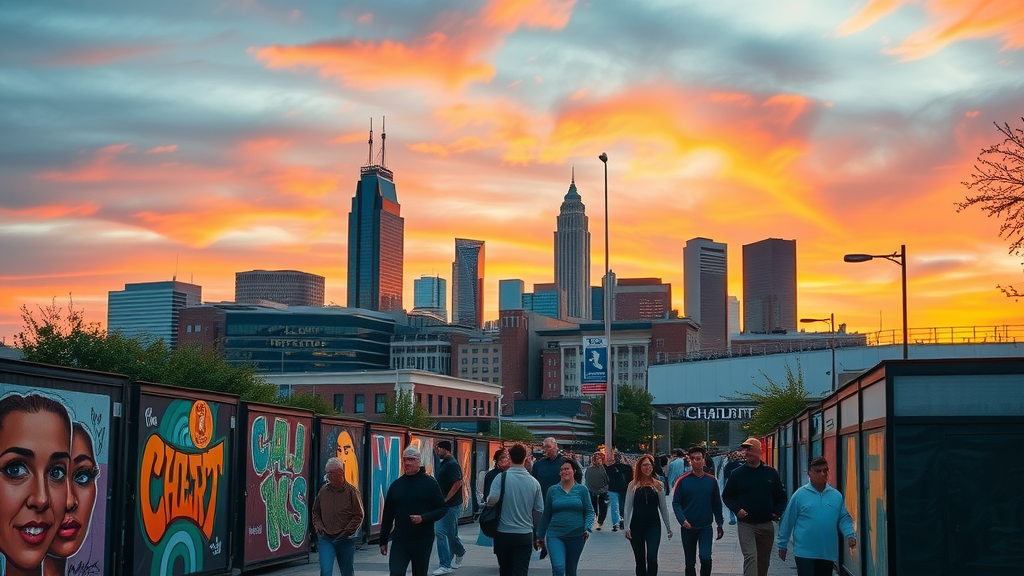
Unlocking the Secrets: What is There to Do in Charlotte for Adventurous Travelers
- Experience Charlotte from a fresh perspective with these little-known activities, perfect for both locals and travelers. Each adventure is tailored to thrill, surprise, and inspire. See practical examples of how you can dive into Charlotte's hidden side.
“Charlotte isn’t just a city, it’s a canvas for explorers.” – Local North Carolina Travel Enthusiast
1. Discover Artistic Delights in South End
South End Street Murals and Art Walks
- Stroll the Rail Trail and encounter ever-changing murals, quirky sculptures, and pop-up markets.
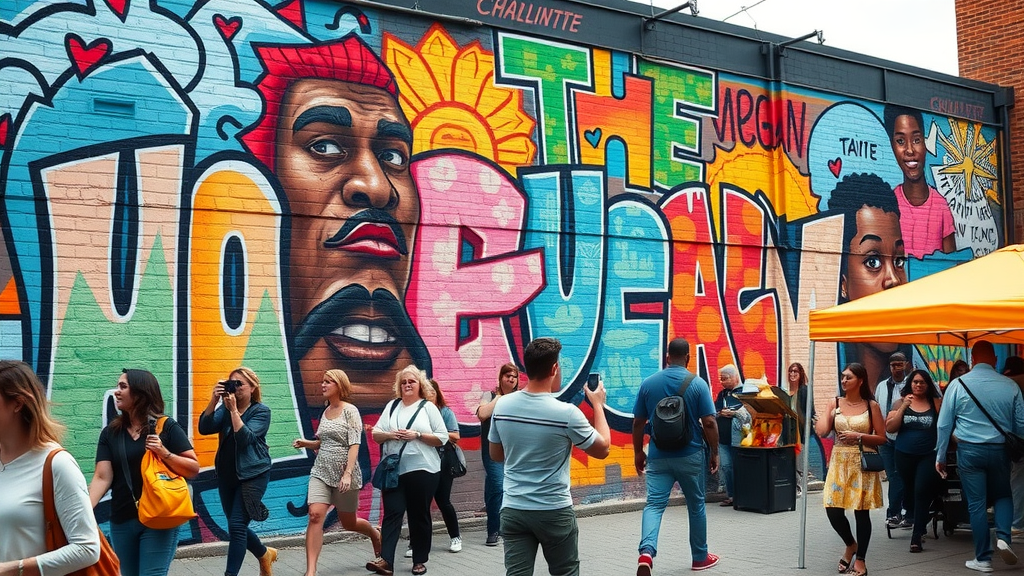
In the heart of the South End district, the Rail Trail pulses with a creative energy that transforms the neighborhood into an open-air art gallery. Whether you’re a devoted art fan or simply curious, you’ll discover massive, colorful murals adorning the walls of breweries, coffee shops, and startup studios. Local artists rotate fresh designs regularly, ensuring each visit reveals a new visual surprise. Don’t miss the pop-up artisan markets where you can shop locally made crafts, jewelry, and quirky finds alongside street performers.
Experiencing the South End art walk isn’t just about the art—it’s about the vibrant atmosphere, buzzing with locals out for a jog, families snapping photos, and friends gathering at sidewalk cafes. Particularly on weekends, the area bursts with energy from live markets and spontaneous events. Take a guided art tour or set your own pace—the ever-changing canvas of South End is always open.
Light Rail Adventures Through South End
- Hop on the light rail for easy access to eclectic eateries, breweries, and galleries. Why the light rail is more than just transportation in Charlotte.
The light rail is a local favorite for traversing Charlotte, letting you skip the traffic and dive into hotspots throughout the city. Board at Uptown and in minutes, you’re whisked to the dynamic streets of South End, where independent retailers and rooftop bars await. The convenience of the Lynx Blue Line means you can piece together a personalized adventure—hop off for brunch, explore art galleries, and sample small-batch brews, all in one afternoon without the parking hassle.
For those new to Charlotte , the light rail is the perfect introduction to how easily the city connects varied, vibrant neighborhoods. As trains glide between Uptown and South End, look for streetside sculptures and pop-up food trucks. Pro tip: its proximity to hidden gems—like contemporary coffee shops beneath mural-covered bridges—makes exploring “what is there to do in Charlotte” a breeze for even first-time visitors.
2. Experience the Thrill of the National Whitewater Center
Whitewater Center Outdoor Adventures
- World-class rafting, zip lining, mountain biking, and guided night paddles just minutes from Uptown.

Just outside Uptown lies the National Whitewater Center , an outdoor enthusiast’s playground renowned for heart-thumping adventure opportunities. Here, adrenaline flows with Olympic-grade whitewater rafting, racing you through man-made rapids that will challenge both beginners and seasoned paddlers. If water isn’t your element, explore miles of scenic mountain biking and hiking trails, or take your thrill to the treetops on zip lining courses that soar above the Catawba River.
As the sun sets, the Whitewater Center transforms with evening paddles—perfect for families or groups seeking a magical twist on adventure. Weekly festivals, live music, and food truck rallies add festive energy, while special night paddles illuminate the river in lantern glow. All these elements combine to make the national whitewater center the city’s hub for outdoor excitement.
Insider Tips for the U.S. National Whitewater Center
- Hidden yoga sessions, seasonal festivals, and the best times to visit for fewer crowds.
While most visitors come for the rapids, insiders know to check the calendar for free open-air yoga classes and seasonal festivals featuring local food, craft beer, and music. Weekdays or early mornings mean fewer crowds and more time to enjoy the adventure courses. Bring a change of clothes if you plan to hit the water or splash through the obstacle course—and don’t miss the riverside beer garden for a post-adventure celebration. For those asking, What is there to do in Charlotte after outdoor activities, the answer is a sunset yoga session or an evening concert at the water center.
3. Explore North End’s Craft and Culinary Scene
North End Breweries and Food Halls
- Sample inventive brews and locally inspired cuisine at Camp North End and adjacent hangouts.
North End has evolved into a buzzing epicenter for foodies and creatives, centered around the repurposed Camp North End compound. Picture a sprawling space dotted with shipping containers turned eateries, food halls serving global street eats, and breweries pouring funky IPAs and sours. Each corner has its own artistic flair—from neon signage and muraled walls to pop-up shops curated by Charlotte’s up-and-coming makers.
The North End culinary circuit inspires spontaneous tastings: grab Filipino barbecue, designer donuts, and inventive cocktails all within steps of each other. Check social feeds for pop-up markets, guest chef nights, and new openings—the dining scene is always a step ahead of the curve, putting North End on every “what is there to do in Charlotte” must-visit list.
Live Music and Art at North End
- Discover underground concerts, art installations, and immersive exhibits in converted factories.

Nights in North End are alive with the thrum of small-batch live music shows that might pop up anywhere—from a hidden courtyard to a repurposed train depot. Local artists regularly transform abandoned factories into immersive visual experiences, with interactive light installations and bold graffiti reclaiming industrial space. Whether you’re attending a secret speakeasy jazz session or a no-cover live band party, the North End creative scene is always pushing boundaries.
Art walks and music nights attract a vibrant mix of young professionals, families, and hip travelers out to sample “what is there to do in Charlotte” after dark. Step off the main drag to discover sculptural playgrounds, spontaneous gallery events, and experimental theatre. North End’s creative energy ensures you’re never far from your next surprising discovery.
4. Get Wild at Carolina Raptor Center
Interactive Encounters with Raptors
- Meet and learn about rescued eagles, owls, and hawks in their natural habitat.
Nature lovers and families will find awe and education at the Carolina Raptor Center , a unique destination dedicated to the rehabilitation and conservation of birds of prey. Walk wooded paths alongside aviaries housing majestic bald eagles, mysterious owls, and speedy falcons—all rescued and cared for in a serene, forested setting. Interactive kiosks and guided tours bring you face-to-face (at a safe distance) with these incredible raptors, teaching the vital role they play in North Carolina’s ecosystem.
If you’re looking to go beyond a typical zoo experience, the Raptor Center’s natural enclosures let you witness breathtaking wingspans and predatory prowess up close. Enthusiastic educators share stories, answer questions, and offer close-up encounters—making the Carolina Raptor Center a must for anyone curious about wildlife.
Educational Programs and Behind-the-Scenes
- Participate in flight demonstration shows and hands-on conservation workshops.
Don’t leave before catching a live flight demonstration—watch hawks and owls swoop and dive with incredible agility. Families and aspiring conservationists can attend hands-on workshops to learn about bird care, habitat conservation, and participate in real research. Special behind-the-scenes tours let you step inside the raptor hospital and rehabilitation center, giving an unmatched look at the dedicated work being done to preserve North Carolina’s wild legacy.
The Carolina Raptor Center is more than an attraction; it’s a dynamic learning space that inspires visitors to actively engage with nature. Whether you visit for an hour or a day, you’ll leave with a newfound admiration for these feathered wonders—and for Charlotte’s role in wildlife conservation.
5. Immerse Yourself in Botanical Wonders at Daniel Stowe Botanical Garden
Daniel Stowe Seasonal Blooms
- Witness stunning floral displays and themed garden events.
With 380 acres of meticulously crafted gardens, Daniel Stowe Botanical Garden is a living canvas that shifts with every season. Spring bursts forth with tulips, daffodils, and cherry blossoms, painting the park in pastels, while summer brings radiant lilies and vibrant hydrangeas. Year-round, the gardens host spectacular events ranging from orchid showcases in the glass house to moonlit walks amongst glowing lanterns.
Plan your visit around special events like the holiday light festival or summer Jazz in the Garden nights. For photographers and Instagrammers, the blend of vibrant blooms and elegant fountains provides the perfect backdrop to capture natural beauty up close.
Garden Trails and Butterfly Bungalow
- Peaceful walking paths and interactive exhibits for nature lovers of all ages.

There’s more to Stowe Botanical Garden than flowers—far-reaching trails wind through lush woods, open meadows, and tranquil ponds teeming with wildlife. The Butterfly Bungalow enchants kids and adults alike, giving hands-on encounters with fluttering monarchs and learning exhibits on pollinator habitats.
The garden’s emphasis on conservation creates a peaceful retreat where all ages connect with nature. It’s a haven for quiet reflection, group strolls, or educational outings—another example of the city’s diverse, often surprising, take on outdoor fun.
6. Urban River Excitement: Water Center Activities
Whitewater Kayaking and Paddle Boarding
- Experience exciting water sports at the heart of Charlotte’s adventure scene.
Charlotte’s bustling water center along the Catawba River beckons adventurers eager to conquer whitewater kayaking and paddle boarding. These activities offer both thrill and serenity, with designated rapids for beginner and advanced paddlers, as well as mellow channels for those interested in mastering their balance on a stand-up board. Equipment rentals and guided tours make it easy for even first-timers to dive right into the action.
The water center isn’t just about adrenaline; scenic stretches let you paddle alongside local wildlife or join group excursions after dark. It’s an active, social, and ever-evolving way to connect with Charlotte’s outdoors, and a strong reason the city is recognized for adventure beyond city limits.
Riverside Picnicking and Relaxation
- Ideal spots for unwinding after outdoor escapades.
After your time on the water, settle down for a riverside picnic on the broad green lawns or at shaded pavilions dotting the riverbanks. The water center’s grounds are perfect for kicking back with friends or family, listening to live music, or simply watching paddleboarders drift by as the sun sets. For an added treat, catch a community yoga session or outdoor movie night under the stars.
The blend of active and peaceful experiences at the water center illustrates why “what is there to do in Charlotte” is never a simple answer—but always an exciting one!
| Attraction | Type of Experience | Approximate Cost | Best for | Local Tip |
|---|---|---|---|---|
| South End Art Walk | Urban Art | Free | Art Lovers | Visit on weekends for live markets |
| Whitewater Center | Outdoor Adventure | $$ | Adrenaline Seekers | Arrive early for night paddles |
| North End | Culinary/Art | $ | Foodies, Creatives | Check for secret concerts |
| Raptor Center | Wildlife/Education | $ | Families, Nature Buffs | Attend flight shows |
| Daniel Stowe Botanical Garden | Nature/Relaxation | $$ | Couples, Photographers | Don’t miss the butterfly house |
7. Hidden Culinary Destinations in North Carolina
- Sample rare cuisines found only in Charlotte, from Filipino street food in Plaza Midwood to French patisseries in Dilworth.

Food explorers will savor Charlotte’s mosaic of rare and authentic cuisine you can’t find elsewhere in North Carolina. Plaza Midwood leads with its famous Filipino food truck festivals and mom-and-pop Asian cafes, while nearby Dilworth tempts with old-world French patisseries and artisan bakeries. Mexican taquerias, Vietnamese coffee shops, and Ethiopian injera stands sit shoulder-to-shoulder with classic southern BBQ joints, showcasing a global flavor map within city limits.
To make the most of Charlotte’s culinary underground, look for pop-up chef dinners, supper clubs, and multicultural food halls—especially on weekends when local markets overflow with international street food. From spicy Szechuan noodles to craft chocolate, there’s always a fresh taste waiting just a step off the main path. For those hungry for New York-level foodie variety, Charlotte’s hidden dining scene delivers!
8. Marvel at Charlotte’s Historic Architecture
- Tour antique buildings in Fourth Ward and discover their stories through guided walking tours.
Step back in time wandering the lovely Fourth Ward , Charlotte’s oldest residential neighborhood, brimming with gingerbread-trimmed Victorians and grand century-old mansions. Guided walking tours share colorful stories of Civil War spies, haunted B&Bs, and bold female pioneers who shaped North Carolina’s Queen City. Don’t miss the tree-lined streets at sunset, when stained glass windows and wraparound porches glow with history.
For architecture buffs and history fans, Charlotte offers more than just glass-and-steel skyscrapers. Local preservation societies open up private homes, secret gardens, and hidden courtyards a few times a year. Each visit unlocks a new chapter of the city’s eclectic past—and “what is there to do in Charlotte” takes on deeper meaning beyond surface attractions.
“If you’re asking ‘what is there to do in Charlotte’—the real adventure begins off the beaten path.” – Charlotte Magazine
9. Experience Live Theatre and Local Productions
- Catch an indie show at Theatre Charlotte or immersive theater in NoDa.
Charlotte’s performing arts thrive in intimate venues far from the bright lights of Uptown. Theatre Charlotte, the oldest continually running company in North Carolina, stages classics and cutting-edge premieres in a restored 1940s playhouse. In the funky NoDa arts district, experimental troupes blur the line between audience and actor, dazzling visitors with immersive experiences and site-specific shows in warehouses, galleries, and even breweries.
Looking for more? The city’s fringe scene runs deep: from live poetry readings and jazz-infused plays to indie musicals and dance collectives, creative spirits are always at work. For arts lovers wondering “what is there to do in Charlotte tonight,” checking local listings promises a unique stage every evening.
Video Walkthrough: Charlotte’s Top 5 Most Unexpected Attractions (insider footage and tips)
Watch our exclusive video tour highlighting Charlotte’s quirkier treasures! Explore hidden speakeasies, the city’s greenest gardens, and after-dark adventures you never knew existed—with tips from those who know the city best.
10. Unwind in Unique Green Spaces
- Enjoy Romare Bearden Park’s dancing fountains, or picnic at the less-crowded Freedom Park.
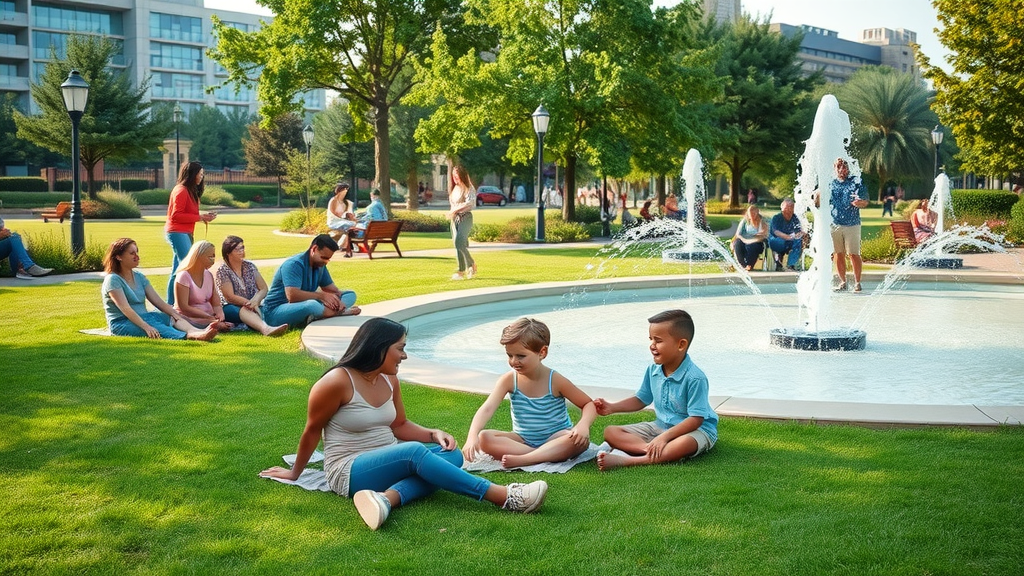
Green spaces in Charlotte come alive with urban flair. Take Romare Bearden Park, where interactive fountains, public art sculptures, and skyline views provide a backdrop for everything from yoga classes and food truck rallies to children’s laughter. Just a short hop away, Freedom Park is a tranquil escape—fewer crowds, wide open lawns, picnic-friendly paths, and a small lake perfect for a lazy afternoon.
Whether it’s spring blooms, crisp autumn leaves, or summer festivals, Charlotte’s parks “wow” in every season. Locals recommend bringing a blanket, stretching out with a good book, and watching city life unfold in its greenest corners.
11. Shop Local: Boutiques and Markets
- Discover the Queen City’s independent shops in neighborhoods like Elizabeth and South End.
Treat yourself to treasure-hunting in Charlotte’s vibrant collection of indie boutiques. From the trendy storefronts lining Elizabeth Avenue to the funky home goods and vintage clothing in South End, each shop offers one-of-a-kind finds you won’t see in big chains. Farmers’ markets and weekend pop-ups showcase local artisans, homemade jams, and Charlotte-branded gifts—perfect for souvenirs and unique presents.
Strike up a chat with shopkeepers, who often double as tour guides with tips for hidden coffee shops or secret cocktail bars. Shopping local is more than retail therapy; it’s a way to support Charlotte’s creative spirit and entrepreneurial drive.
12. Head Underground with Charlotte’s Speakeasies
- Sip creative cocktails at secret bars like The Cellar or dot.dot.dot; don’t forget the password!

Charlotte’s nightlife isn’t just Uptown dance clubs and sports bars—the city shines after dark in hidden speakeasies modeled after Jazz Age haunts. Venues like The Cellar mix mutli-layered cocktails, serve up hush-hush ambience behind unmarked doors, and sometimes require a password for entry. Dot.dot.dot, located in the back of a shopping center, is a must-visit for whiskey aficionados and lovers of decadent decor.
Finding your way through shadowy entrances is half the fun. Mixologists delight in crafting unique drinks using locally distilled spirits. For a night out with friends or an offbeat date idea, Charlotte’s underground bars are pure adventure—and a lively answer to anyone asking “what is there to do in Charlotte after dark.”
13. Family Adventures Beyond the Obvious
- Try indoor rock climbing, escape rooms, and interactive science exhibits at Discovery Place.
If you’re traveling with kids or just looking to unleash your inner child, Charlotte goes way beyond ordinary playgrounds. Discovery Place Science features hands-on exhibits, immersive planetarium shows, and the ever-popular giant indoor rainforest. Families love indoor rock climbing centers, escape rooms that challenge group problem-solving, and trampoline parks that let you bounce till you drop.
Weekends bring pop-up science demonstrations, animal meet-and-greets, and new rotating exhibits—ensuring something fresh every visit. Charlotte’s creativity shines in how it entertains and educates across generations.
14. Go on a Self-Guided Tour of North Carolina’s Racing Heritage
- Follow the Charlotte Motor Speedway trail and nearby racing museums for motorsport fans.
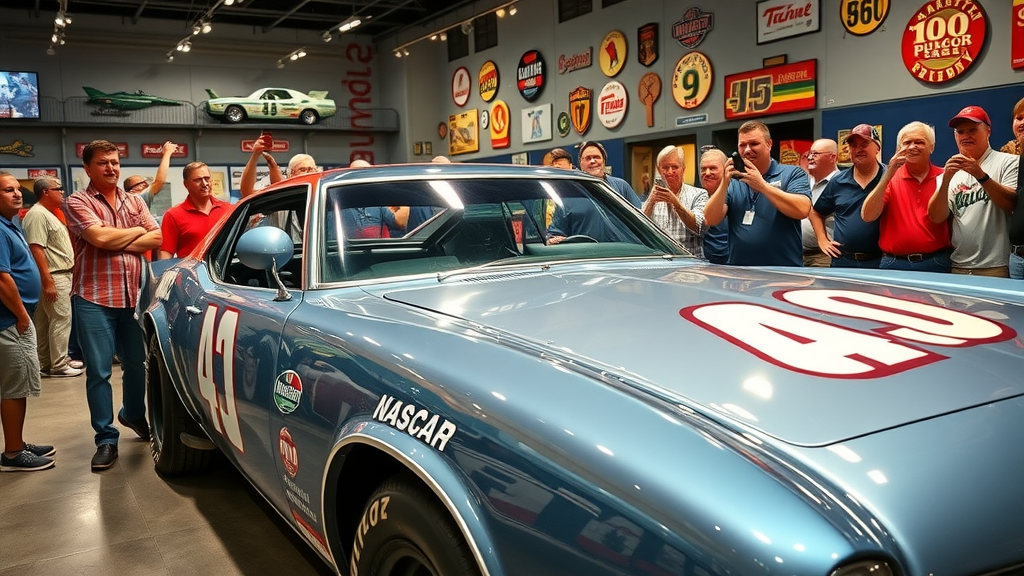
Race car history is woven into the fabric of Charlotte and the surrounding region—nowhere more so than at the NASCAR Hall of Fame and the legendary Charlotte Motor Speedway. Self-guided tours take you through vintage stock cars, interactive racing simulators, and pit stop workshops where fans of all ages can try their hand at tire-changing. The museum exhibits honor legendary drivers and reveal stories behind the thrilling rise of motorsport culture in North Carolina.
Extend your trip with visits to racing shops in Concord, the area’s famed Bass Pro Shops, and even the infield of the track during event weekends. Whether you’re a die-hard speedster or simply intrigued by fast cars and Southern culture, Charlotte makes it easy to become part of the action.
15. People Also Ask: Is There Anything Fun to Do in Charlotte, NC?
- Absolutely! From outdoor adventures at the national whitewater center to vibrant nightlife in south end and unique cultural experiences at the raptor center, Charlotte has excitement for every interest.
16. People Also Ask: Is Charlotte Worth Visiting?
- Charlotte stands out for its innovative culinary scene, diverse neighborhoods, accessible green spaces, and historical roots—which makes it a must-visit for all types of travelers.
17. People Also Ask: What is Charlotte Mostly Known For?
- National whitewater adventures, thriving banking industry, NASCAR heritage, southern hospitality, and scenic parks are some defining traits.
18. People Also Ask: Where Do 40 Year Olds Hang Out in Charlotte, NC?
- Find a mix of relaxed breweries in south end, live jazz lounges in uptown, unique eateries in north end, and cultural events at museums—a perfect mix for professionals and socialites.
Frequently Asked Questions About What is There to Do in Charlotte
- What’s the best time of year to explore Charlotte’s outdoors? Spring and fall provide mild weather, blooming gardens, and packed festival calendars, making them ideal for outdoor exploration. In summer, enjoy longer days on the water, while winter brings fewer crowds to museums and gardens.
- Which hidden gem do locals recommend most? Camp North End consistently ranks high among locals for its food, art, and event offerings. However, the surprise factor of finding a secret speakeasy or stumbling on a festival at Freedom Park wins hearts year after year.
- Are Charlotte’s attractions accessible by public transportation? Yes! The light rail connects Uptown with South End and beyond, while buses and ride shares fill the gaps. Many attractions offer dedicated bike paths or pedestrian walkways for easy navigation—making urban adventures stress-free.
- How family-friendly are Charlotte’s adventure parks? The Whitewater Center and Discovery Place cater to all ages, with beginner courses, hands-on exhibits, and safety-first programming. Families love the mix of adrenaline and learning to be found throughout the city’s green spaces and museums.
Essential Tips for Making the Most Out of What is There to Do in Charlotte
- Combine public transit (light rail) with ride shares for seamless sightseeing. Local festivals and seasonal events offer bonus activities not to be missed.
Must-See Events This Season in Charlotte: Top Picks and Highlights
Discover the city’s lively event calendar—from outdoor concerts and street festivals to pop-up food fairs! Get insider tips on what not to miss this month and how to score tickets to the biggest happenings around town.
Don’t Miss Out: Start Exploring the Hidden Side of Charlotte Today
- Whether you’re visiting for a weekend or a longtime resident, there’s always something new to discover. Dive into Charlotte’s vibrant neighborhoods, ignite your sense of adventure, and uncover your new favorite spot in the Queen City!
Action Step: Explore Charlotte’s hidden gems—start with a fresh mural in South End, paddle on the Catawba, or sample a secret speakeasy. The Queen City adventure never ends!
Sources
- https://www.charlottesgotalot.com – Official Charlotte Visitors Site
- https://www.charlottestories.com – Charlotte Stories
- https://www.tripadvisor.com/Attractions-g49022-Activities-Charlotte_North_Carolina.html – TripAdvisor Charlotte Attractions
- https://www.axios.com/local/charlotte – Axios Charlotte City Guide
- https://www.nascarmuseum.com – NASCAR Hall of Fame
- https://www.usnwc.org/ – U.S. National Whitewater Center
- https://www.carolinaraptorcenter.org/ – Carolina Raptor Center
- https://www.dsbg.org/ – Daniel Stowe Botanical Garden
 Add Row
Add Row  Add
Add 


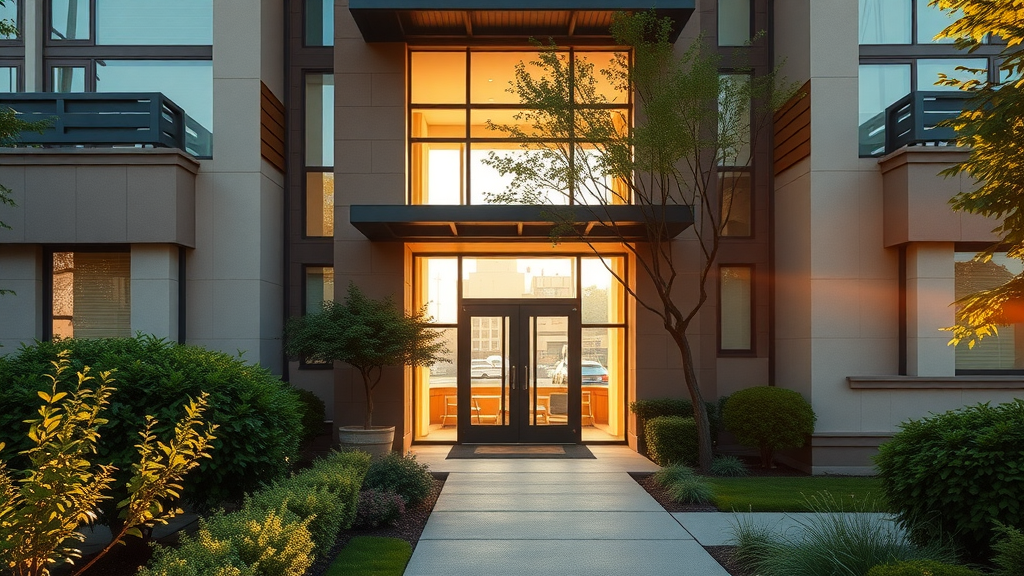
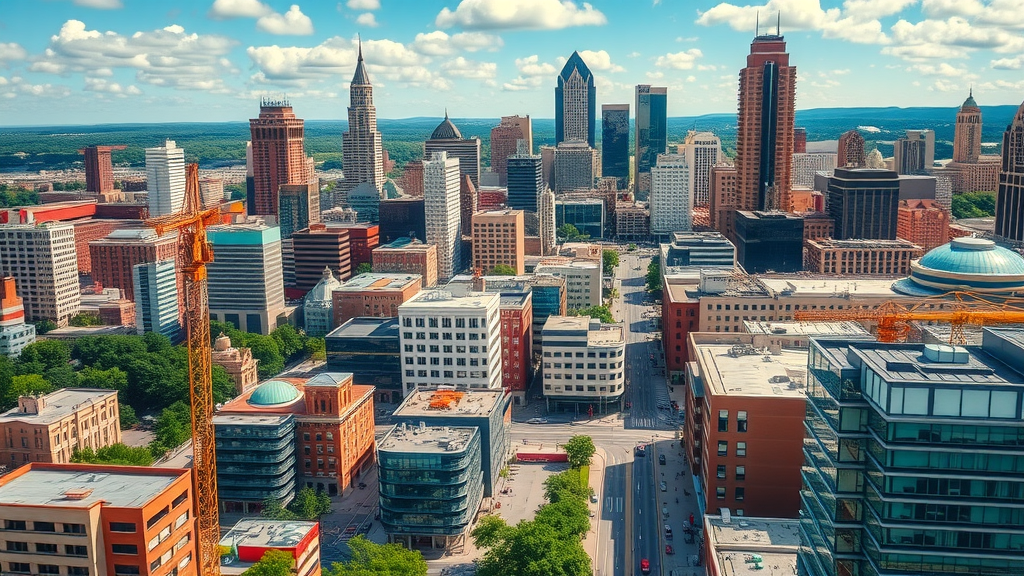
Write A Comment